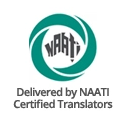
Yiddish language emerged around the 9th century AD in a region encompassing parts of modern-day Germany and France. Its development was fueled by the interaction between Ashkenazi Jewish communities and their neighbors.
Old High German, the precursor to modern German, provided the core vocabulary and grammatical structure. Hebrew, the sacred language of Judaism, contributed a significant amount of religious terminology. Aramaic was the language spoken in Judea during the time of Jesus. It added another layer, particularly in religious texts and everyday expressions.
Finally, as Ashkenazi Jews migrated across Central and Eastern Europe, the language absorbed elements from Slavic languages like Polish, Ukrainian, and Russian. This unique blend resulted in the Yiddish we know today.
Evolution of Yiddish Script
The written form of Yiddish reflects its multifaceted heritage. Traditionally, Yiddish is written using the Hebrew alphabet. However, this is with the addition of diacritics (special markings) to represent sounds not found in Hebrew. The Yiddish orthography developed over centuries and allowed Yiddish speakers to seamlessly integrate Hebrew religious texts into their daily lives. However, the 20th century saw the rise of the Latin alphabet. This, particularly for secular writings and communication in the wider world.
Today, both Hebrew and Latin scripts are used for Yiddish, with the choice often depending on the context and intended audience. For instance, religious texts and publications within Haredi Jewish communities (those adhering to strict interpretations of Jewish law) typically use the Hebrew script, while Yiddish newspapers or websites aimed at a broader audience might utilize the Latin script.
Comparison to German and Hebrew
While Yiddish shares some vocabulary and grammatical structures with German, due to its Old High German foundation, the two languages have diverged significantly. Yiddish incorporated elements from Hebrew and Aramaic, resulting in a distinct sound and vocabulary.
Additionally, Yiddish grammar features a simpler verb conjugation system compared to German. Hebrew, on the other hand, is a Semitic language with a completely different structure and root system. While Yiddish borrowed religious terminology from Hebrew, it remains a separate language with its own unique character.
Influencing Other Languages
Over the centuries, Yiddish has left its mark on other languages, particularly those spoken in areas with historical Ashkenazi Jewish communities. Loanwords from Yiddish can be found in English (think “chutzpah” or “nosh”), Slavic languages like Polish and Russian (“balagan” for mess), and even Hebrew (“kvetch” for to complain). This linguistic exchange reflects the cultural exchange that occurred as Yiddish speakers interacted with their neighbors.
Speakers Worldwide
The 20th century brought a period of upheaval for Yiddish speakers. The devastation of World War II and the Holocaust tragically decimated Yiddish-speaking populations. However, Yiddish communities continue to thrive in pockets around the world, particularly in Israel, North America, and parts of Europe. Notably, Yiddish serves as the primary language of instruction in many Haredi Jewish yeshivas (religious schools), ensuring its continued use within specific religious communities.
At TranslateSwift, we bridge the communication gap between Yiddish and 120+ other languages. Our team of expert linguists, with a deep understanding of Yiddish’s nuances, delivers exceptional translations for any document. Whether you need legal contracts or study documents accurately translated, TranslateSwift’s certified team can do so while ensuring reliability and cultural sensitivity.
Other Languages
- English
- Spanish
- German
- Dutch
- French
- Italian
- Afrikaans
- Albanian
- Amharic
- Arabic
- Armenian
- Azerbaijani
- Basque
- Belarusian
- Bengali
- Bosnian
- Bulgarian
- Cantonese
- Catalan
- Cebuano
- Chichewa
- Chinese - Simplified
- Chinese - Cantonese
- Chinese - Traditional
- Chinese - Mandarin
- Corsican
- Croatian
- Creole
- Czech
- Danish
- Dari
- Esperanto
- Estonian
- Farsi
- Filipino
- Finnish
- Frisian
- Galician
- Georgian
- Greek
- Gujarati
- Haitian Creole
- Hausa
- Hawaiian
- Hebrew
- Hindi
- Hmong
- Hungarian
- Icelandic
- Igbo
- Indonesian
- Irish
- Japanese
- Javanese
- Kannada
- Kazakh
- Khmer
- Korean
- Kurdish
- Kyrgyz
- Lao
- Latin
- Latvian
- Lithuanian
- Luxembourgish
- Macedonian
- Malagasy
- Malay
- Malayalam
- Maltese
- Maori
- Marathi
- Mongolian
- Montenegrin
- Myanmar
- Nepali
- Norwegian
- Odia
- Pashto
- Persian
- Polish
- Portuguese
- Punjabi
- Romanian
- Russian
- Samoan
- Scots Gaelic
- Serbian
- Sesotho
- Shona
- Sindhi
- Sinhala
- Slovak
- Slovenian
- Somali
- Sundanese
- Swahili
- Swedish
- Tajik
- Tagalog
- Tamil
- Telugu
- Thai
- Turkish
- Ukrainian
- Urdu
- Uyghur
- Uzbek
- Vietnamese
- Welsh
- Xhosa
- Yiddish
- Yoruba
- Zulu
